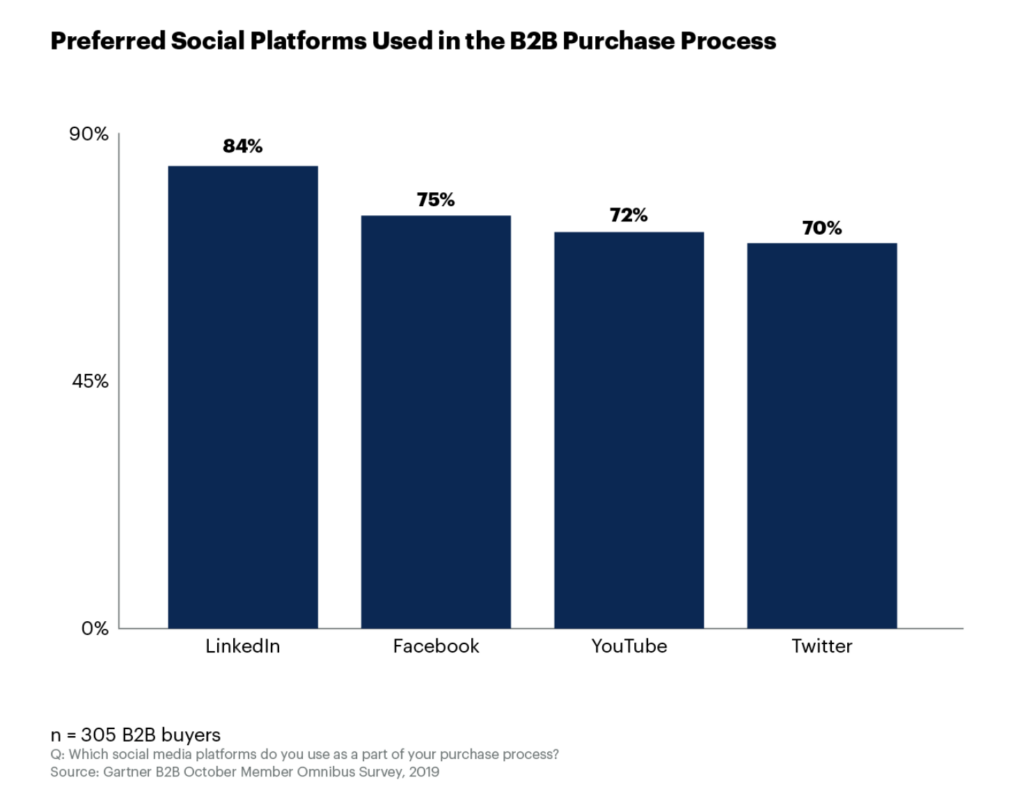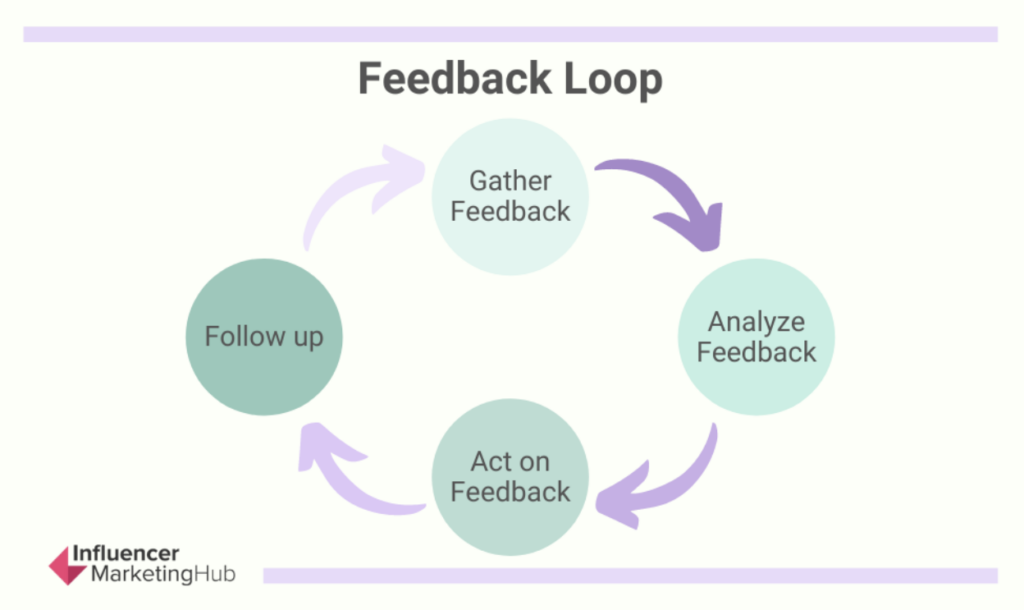Customer feedback is a valuable source of information and one of the sharpest tools you can add to your marketing toolbox to attract new B2B customers and build brand loyalty. Both positive and negative feedback is crucial for your success as a manufacturing company. Learn how to use customer feedback in your marketing strategy and specific ways to encourage B2B buyers to leave more feedback.
Key Takeaways:
- You can generate more customer feedback by personally asking your loyal customers to leave reviews and rate your services
- Customer feedback will recommend your business to other B2B buyers by building your credibility
- Use customer feedback to identify areas for improvement in your business
4 Methods of Gathering Feedback from B2B Buyers
Use these four strategies to encourage your B2B buyers to leave more feedback for you to use in marketing for manufacturers.
Request Feedback
Consumer businesses constantly ask customers for feedback. Most receipts, phone interactions, and online communications will include feedback requests.
This strategy isn’t exclusive to the B2C market. It’s also a valuable habit for B2B manufacturing businesses to use to generate more feedback since your buyers are just as interested in hearing what other satisfied and dissatisfied customers have to say.
Because B2B sales tend to be more personal, you will see tremendous success when asking for feedback on the phone. For example, you might wait until a client experiences a significant profit boost because of your products before reaching out to ask if they are willing to share their success with others through a review.
Depending on the size of the account and your relationship with them, you might offer a gift in return for the review, from a simple thank you note to free products and promotions.
Encourage Online Ratings
You don’t need to collect all reviews in person. You can also encourage reviews by having links your B2B buyers can follow. For example, each product or equipment you offer can have a rating button so your clients can conveniently leave reviews on their favorite products or equipment they purchased from your manufacturing company.
Engage Customers for More Social Media Comments
Social media comments are a feedback channel growing in popularity in B2B circles. About 84% of B2B buyers use LinkedIn in their purchase process, making it the top B2B social media platform for encouraging customer comments and reviews through engaging content. B2B businesses may also consider using other effective social channels, including Facebook, YouTube, and Twitter.

Send Surveys
Surveys are customized feedback forms that will help you generate the feedback you need. For example, suppose you’re looking for specific ways to improve your products and businesses. In that case, you might include fields asking for their experience with areas such as customer support, products, purchasing, and other steps in their purchase journey.
When creating specific surveys, keep the forms simple enough to complete in one sitting, as your B2B buyers are busy and are less likely to fill out a complex survey. For example, having numerical ratings for each area and leaving one blank space at the end of the survey is one way to make it quick and straightforward to fill out versus an open-ended answer for each question.
How to Use Customer Feedback in Your Marketing Strategy
Use these five strategies to incorporate your customers’ feedback into content marketing for manufacturing companies.
1. Identify Areas of Improvement
Customer feedback is a valuable source of first-party data. First-party data will help you build a personalized strategy to attract high-value customers, as 86% of B2B buyers expect the companies they work with to be well-informed about them and their needs.
Through customer feedback, you can identify what your buyers want to see, what they like about your business, and what they wish you did better. Then, you can use that information to optimize your business practices and products to improve future feedback and create a more personalized and positive experience.
After improving those areas, you gather more feedback, which creates an endless loop. This loop is called a feedback loop and is a strategy for continually improving your business practices and optimizing your manufacturing processes for optimal performance.

2. Help the Customers Feel Seen and Heard
Customer feedback gives your B2B buyers a voice. About 86% of B2B buyers will spend more when the business they are working with offers a positive customer experience. They will also remain more loyal to that company.
Allowing them to offer advice, provide feedback, and hear back from your company contribute to a positive experience.
3. Create Testimonials for Others to Read
A positive review will have a ripple effect on your buyer’s behavior. Those that read a positive review are willing to spend about 31% more on your business. In addition, they are also more likely to purchase from your company.
Testimonials improve your sales cycle and conversion rate by building a foundation of trust before you start your nurturing process. Therefore, new leads begin their interactions already with a favorable opinion formulated about your brand.
You then build on that foundation of trust with further information they need to make an informed decision.
4. Control Your Online Reputation
Negative feedback is part of doing business, as you can’t satisfy anyone, even if that’s your goal. However, having negative feedback can be beneficial for controlling your online reputation and building a positive image.
If you only shared positive feedback online, buyers would grow suspicious that you’re hiding feedback and aren’t fully transparent. This can hurt you more than allowing potential leads to see negative reviews. Negative feedback is your chance to show how you handle poor experiences and what lengths you take to make the situation right.
Even if you can’t satisfy that customer, potential buyers will see your online response to the customer and know you care about your customer’s satisfaction.
5. Improve Your Credibility
About 92% of B2B buyers are more likely to purchase from your manufacturing business after reading a review from a trusted source. You don’t need many reviews to build your credibility. Just five reviews can increase your conversion rates by 270% compared to no reviews.
You can use customer feedback, positive experiences, and customer success stories in your marketing to boost your sales as potential buyers look for reviews in their research. For example, case studies are among the top three most effective B2B marketing content types. A manufacturing case study works as customer feedback by showing your client’s positive experience and specific ways your manufacturing business boosted sales for their company.
Video Source: Alex Cattoni on YouTube
Build a Strategic Marketing Roadmap Using More Feedback
Is your customer feedback part of your manufacturing marketing processes?
Connect with our industrial marketing experts to discuss your marketing roadmap and learn specific and actionable ways to incorporate a feedback loop into your process. We will help you identify valuable insights from comments and reviews and show you how to adjust your marketing plan accordingly so you are consistently exceeding your customers’ expectations and reaching new customers more effectively.
Contact us to learn more about our marketing strategy services for manufacturers.

